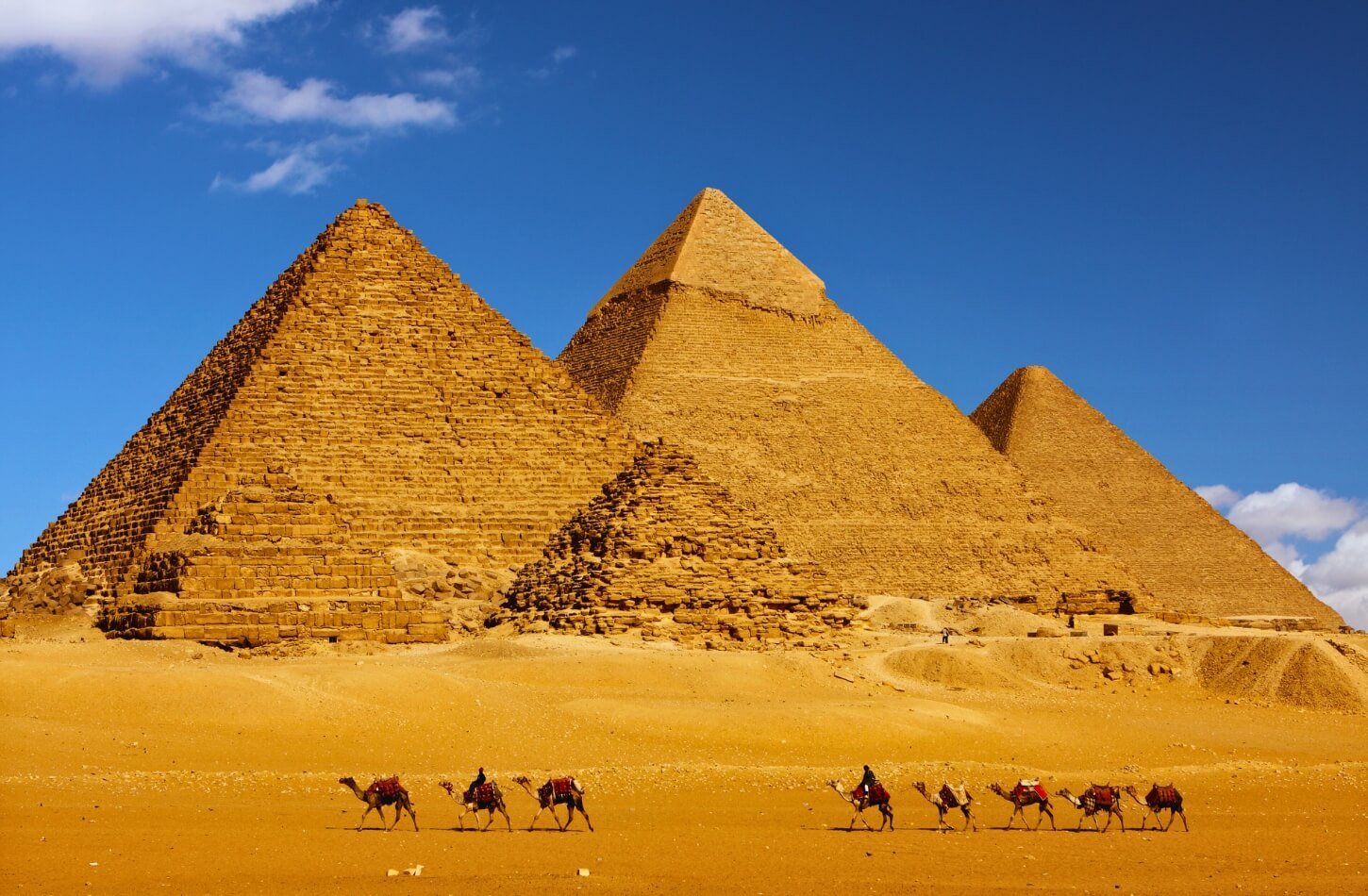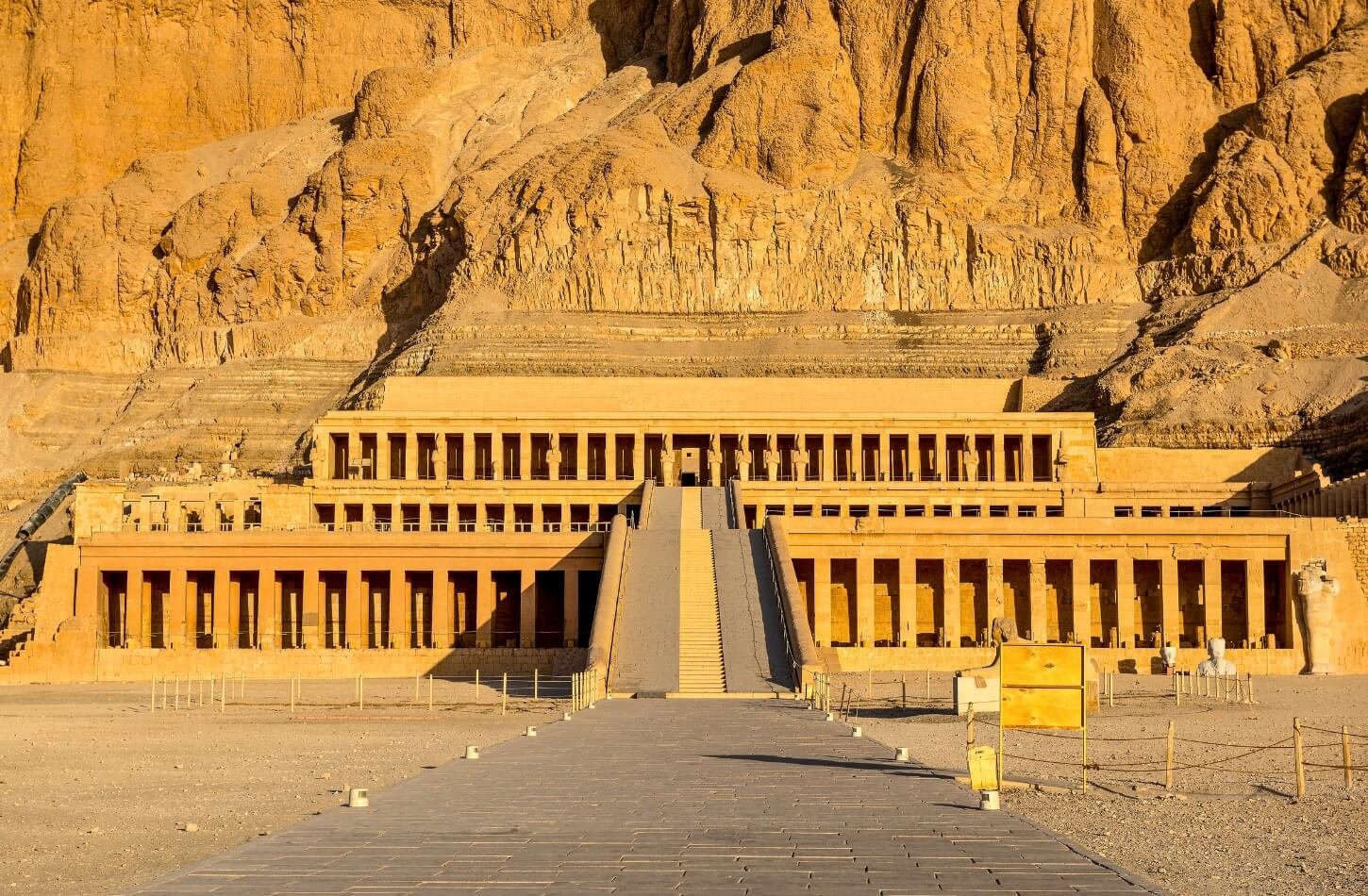You’re about to start a journey through a world-famous Ancient Egyptian site. The Karnak Temple Complex is a huge Historical monument. It has amazed visitors for centuries with its history and beautiful buildings.
This site is a UNESCO World Heritage Site. It’s a top spot for anyone who loves history and culture. It covers over 200 acres, filled with temples, chapels, and more. These were built over 1,300 years.
Exploring this complex, you’ll find a wealth of history, architecture, and culture. Our guide will show you the best sights. We’ll also give you key visitor info to help you enjoy your trip.
History of the Karnak Temple Complex
The Karnak Temple Complex is as vast as the Egyptian desert. It shows the skill of the Pharaohs. Located in Luxor, Egypt, it has been a key place of worship for over 1,300 years.
The building of the Karnak Temple Complex started around 2000 BC. It went on until the Greco-Roman period. Almost every pharaoh of the 18th Dynasty helped build it.
The main focus was the Temple of Amun-Ra, the Theban god. You’ll see how it grew, from early times to the 18th Dynasty’s big changes.
The Karnak Temple has a long history with many changes. It has many sanctuaries, halls, and obelisks. These show how ancient Egyptian architecture changed over time.
Exploring the Karnak Temple Complex reveals its deep role in ancient Egyptian culture. It’s still important today.
Architectural Marvels of Karnak
The Karnak Temple Complex shows the ancient Egyptians’ skill and creativity. The Hypostyle Hall is amazing, with 134 columns. These columns show the advanced engineering of that time.
Exploring the complex, you’ll find the Sacred Lake. It’s peaceful and beautiful, adding to the site’s charm. The Karnak Temple Complex is a top spot for history, architecture, and culture lovers.
Important Deities Celebrated at Karnak
At the heart of the Karnak Temple Complex lies a deep reverence for several key deities. These include Amun-Re, Mut, and Khonsu. They formed the Theban Triad, a central part of the ancient Egyptian pantheon worshipped in the region.
The Temple of Amun-Ra is one of the most significant structures within the complex. It reflects the importance of Amun-Re as the king deity of Thebes. As the supreme god, Amun-Re was revered by the Pharaohs. They built extensive temples and shrines in his honor.
The Theban Triad
The Theban Triad consists of Amun-Re, the father; Mut, the mother; and Khonsu, the son. Each deity has its own distinct role and significance within the Ancient Egyptian mythology.
- Amun-Re: The king of the gods, often depicted with a ram’s horns or as a man with a falcon’s head.
- Mut: The mother goddess, associated with fertility and protection.
- Khonsu: The god of the moon, often depicted as a youthful figure with a sidelock of youth.
The sacred site of the Karnak Temple Complex is not only a testament to the religious beliefs of the ancient Egyptians. It also reflects their architectural prowess and cultural practices. As you explore the complex, you’ll discover the various temples and shrines dedicated to these deities. Each has its own unique history and significance.
How to Get to the Karnak Temple Complex
Getting to the Karnak Temple Complex in Luxor, Egypt, is easy. You can use many ways to get there. This makes it simple for visitors from everywhere.
By Air: The closest airport is Luxor International Airport. It gets flights from big cities like Cairo. Taking a flight from Cairo to Luxor is quick if you’re in a hurry.
By Train: Egypt’s trains connect Luxor to Cairo. You can take a train from Cairo’s Ramses Station to Luxor Station. This trip is longer but shows beautiful Egyptian views.
By Bus: Buses also go to Luxor. Companies like several bus companies run from Cairo and other big cities. This is cheaper but takes longer than flying or trains.
After arriving in Luxor, getting to the Karnak Temple is simple. You can take a taxi, use a ride-sharing app, or walk if you’re close. The temple is in Luxor’s center, so it’s easy to reach.
It’s smart to plan your trip ahead. Check the latest travel times and book your tickets early. This is true, even more so during busy times.
Tips for Exploring the Complex
To make the most of your visit, wear comfy shoes. Bring sun protection and stay hydrated. A guided tour can also enhance your experience. It provides valuable insights into the complex’s history and significance.
- Comfortable Shoes: Wear shoes that are comfortable for walking, as you’ll be covering a significant distance.
- Sunscreen and Sun Protection: Don’t forget to pack sunscreen, a hat, and sunglasses to protect yourself from the sun.
- Stay Hydrated: Bring water to stay hydrated throughout your visit.
- Guided Tour: Consider hiring a guide to gain a deeper understanding of the complex’s history and significance.
By following these tips, you can ensure a memorable and enjoyable visit to the Karnak Temple Complex.
Key Highlights to See
The Karnak Temple Complex is full of ancient Egyptian history. It has many key attractions you shouldn’t miss.
Some of the top highlights include:
The Hypostyle Hall: This is one of the most impressive structures within the complex, known for its vast array of columns.
The Great Hall of Columns: Another term for the Hypostyle Hall, emphasizing its grandeur.
The Sacred Lake: A significant feature that was used for ritual purposes.
The Avenue of Sphinxes: A majestic pathway lined with sphinx statues, connecting the temples.
Exploring these highlights will help you understand the Karnak Temple’s history and culture. The complex shows the ancient Egyptians’ architectural skill. It also highlights the Temple of Amun-Ra’s religious importance.
Take your time to see the details and size of these monuments. They were built by the Pharaohs of Egypt.
Cultural Significance of Karnak
The Karnak Temple Complex is a key cultural and historical site in Egypt. It offers a peek into Ancient Egyptian culture, architecture, and worship.
As a UNESCO World Heritage Site, it’s known worldwide for its historical value. It shows the ancient Egyptians’ skill in building and their deep religious beliefs.
The complex is more than temples and monuments. It shows the ancient Egyptian society’s religious, political, and social life. The structures were built over 1,300 years, showing how architecture and beliefs changed.
Some important cultural aspects of the Karnak Temple Complex include:
- The Theban Triad (Amun, Mut, and Khonsu) in ancient Egyptian religion.
- The temple’s role as a center of worship and rituals.
- The ancient Egyptians’ architectural and artistic achievements.
- The complex’s historical value as a record of pharaohs’ reigns.
Visiting the Karnak Temple Complex is more than seeing an old site. It’s about diving into Egypt’s rich cultural heritage. Walking through, you feel the legacy of a civilization that still captivates people everywhere.
The complex’s status as a historical monument is not just because of its age. It’s also because it helps us understand human history and cultural growth.
Best Photography Spots
The Karnak Temple Complex is a dream for photographers. It has many amazing scenes and structures to capture. Here are some top spots to check out:
Hypostyle Hall
The Hypostyle Hall is famous for its 134 columns. It’s a sight to behold. Try shooting from the center or from different angles to show off the columns’ height.
The Sacred Lake
The Sacred Lake is calm and reflective. It’s perfect for photos, even more so at sunrise or sunset. The light then is golden and beautiful.
Here are some tips for great photos at Karnak Temple:
- Golden Hour: Use the early morning or late afternoon for warm, golden light.
- Experiment with Angles: Get low or climb high to find unique views.
- Play with Reflections: Use the water to add depth to your photos.
By capturing Karnak Temple’s beauty, you’ll make memories that last. Whether you’re a pro or just love taking photos, the temple’s ancient beauty and peaceful scenes are full of creative possibilities.
Visitor Amenities and Services
The Karnak Temple Complex in Luxor, Egypt offers many amenities and services. It’s a UNESCO World Heritage Site and a key Historical monument. It aims to make your visit comfortable and fun for everyone.
Guided tours are available to explore the site’s history. Knowledgeable guides will share insights and answer your questions. They help you understand the complex’s importance.
The complex also has clean restrooms and food and drink options. You can take a break and enjoy local dishes.
Key Amenities and Services:
- Guided tours in multiple languages
- Clean and well-maintained restrooms
- Variety of food and beverage options, including local and international cuisine
- On-site shops for souvenirs and local handicrafts
Using these amenities and services, you can fully enjoy your visit. You’ll make unforgettable memories in Luxor, Egypt.
Nearby Attractions to Consider
The Karnak Temple Complex is just the start. Luxor has a lot more to offer. You can explore many historical and cultural spots nearby.
Some of the top nearby attractions include:
Luxor Temple: This amazing structure is linked to Karnak by the Avenue of the Sphinxes. It shows the ancient Egyptians’ skill in building. Luxor Temple is dedicated to helping pharaohs live again, making it a key spot for Ancient Egyptian history fans.
The Valley of the Kings: On the Nile’s west bank, this is where pharaohs of the New Kingdom were buried. It’s a UNESCO World Heritage Site known for its fancy tombs and detailed hieroglyphics. It gives a peek into the burial customs of Egypt’s rulers.
The Temple of Hatshepsut: This temple is for Hatshepsut, one of Egypt’s few female pharaohs. Its design is unique and blends well with the landscape. It stands out among historical monuments in Egypt.
Seeing these places will make you understand Luxor’s history better. It will also make your trip more interesting. You’ll get a full view of ancient Egypt’s culture and traditions.
Preparing for Your Visit
Wear comfy shoes for your trip to the Karnak Temple Complex. You’ll be walking a lot. Also, bring sun protection like a hat, sunglasses, and sunscreen. This will help you stay cool in the hot Egyptian sun.
It’s important to drink water and take breaks in the shade. This keeps you hydrated and ready to enjoy the Karnak Temple Complex. Being prepared lets you fully appreciate its history and culture.







